Hey there, friend. If you’ve ever wondered how mental‑health professionals put a name to that heavy feeling in your chest, you’re in the right place. In the next few minutes we’ll walk through the whole process—what the DSM is, what the exact criteria look like, how a clinician turns those check‑boxes into a diagnosis, and why it matters (and sometimes doesn’t). Grab a cup of tea, settle in, and let’s demystify the DSM depression diagnosis together.
What Is DSM
The DSM (Diagnostic and Statistical Manual of Mental Disorders) is basically the “big rulebook” that psychologists, psychiatrists, and counselors use when they talk about mental‑health conditions. Think of it like a universal language: everyone from a therapist in New York to a school counselor in Tokyo uses the same definitions, so when they say “major depressive disorder,” we all know what that truly means.
What does “DSM” stand for?
It stands for Diagnostic and Statistical Manual of Mental Disorders—published by the American Psychiatric Association (APA). The latest edition, DSM‑5‑TR (Text Revision), updates the criteria we’ll discuss below, but the core ideas stay the same.
Why do clinicians rely on the DSM?
Standardization is king in health care. The DSM gives clinicians a solid framework for:
- Speaking the same language across specialties.
- Getting insurance to cover treatment (yes, the paperwork matters).
- Conducting research that can be compared worldwide.
Because of that, when we talk about a “DSM depression diagnosis,” we’re really talking about a diagnosis rooted in evidence‑based criteria that have been vetted over decades.
Mini‑timeline of DSM editions
| Edition | Year | Key Change for Depression |
|---|---|---|
| DSM‑I | 1952 | First formal definition of “depressive reaction.” |
| DSM‑III | 1980 | Introduced “major depressive episode” as a distinct disorder. |
| DSM‑IV | 1994 | Added criteria for “dysthymic disorder.” |
| DSM‑5 | 2013 | Clarified specifiers (e.g., anxious distress). |
| DSM‑5‑TR | 2022 | Minor wording tweaks, updated prevalence data. |
DSM Criteria
Okay, time to get into the nitty‑gritty. The DSM‑5 lays out exactly what a clinician needs to see before saying, “Yes, this is depression.” It’s a two‑step guard: core symptoms plus supporting rules.
Two core symptoms you can’t skip
At least one of these must be present:
- Depressed mood – feeling sad, empty, hopeless most of the day, nearly every day.
- Loss of interest or pleasure (anhedonia) – the things you used to love just feel… flat.
The other nine possible symptoms
According to the official DSM‑5 criteria for Major Depressive Disorder, clinicians look for five (or more) of the following, all occurring during the same 2‑week period:
| Symptom | What it might look like |
|---|---|
| Significant weight change | Unexplained loss or gain of >5% body weight, or appetite shift. |
| Sleep disturbance | Insomnia (can’t fall or stay asleep) or hypersomnia (sleeping all day). |
| Psychomotor changes | Restlessness or being noticeably slowed down. |
| Fatigue or loss of energy | Constant tiredness, even after a full night’s sleep. |
| Feelings of worthlessness or excessive guilt | Self‑criticism that feels disproportionate to the situation. |
| Diminished concentration | Difficulty focusing, making decisions, or remembering simple things. |
| Recurrent thoughts of death | Suicidal ideation, plans, or attempts. |
How many symptoms and for how long?
Five or more of the above, lasting at least two weeks, and they must represent a change from previous functioning. In other words, it can’t be your usual “Monday blues.”
Additional rules (the “must‑have” box)
- The symptoms cause clinically significant distress or impairment in work, social life, or other important areas.
- They’re not better explained by another medical condition, substance use, or a bereavement reaction.
- There’s no history of manic or hypomanic episodes (unless this is a mixed‑feature presentation, which the DSM lists as a specifier).
Specifiers that matter
Once the core diagnosis is set, clinicians can add specifiers such as “with anxious distress” or “with mixed features.” These tags help guide treatment—something we’ll circle back to later.
How Clinicians Diagnose
Now that you know the checklist, you might wonder how a therapist actually uses it. The process is surprisingly human.
Step 1 – The conversation
First, there’s the clinical interview. It’s not a grilling session but a respectful dialogue. The clinician asks open‑ended questions like, “What’s been on your mind lately?” or “How have you been sleeping?” They also gather collateral info—maybe a partner’s observation or a school report—because depression often shows up in behavior, not just feelings.
Step 2 – Structured assessment tools
Many professionals pair the DSM checklist with validated scales like the PHQ‑9 or Hamilton Depression Rating Scale (HAM‑D). These tools give a quick numerical snapshot and can highlight severity. Think of them as a “quick‑look” before the deep dive.
Step 3 – Applying the DSM checklist
Here’s where the magic (and rigor) happen. The clinician lines up what you’ve reported with each DSM symptom. They note which ones you meet, check for the required two‑week duration, and verify that nothing else better explains the picture (e.g., thyroid problems).
Step 4 – Documenting the diagnosis
Once the criteria are satisfied, the clinician writes it down using the ICD‑10 code that matches the DSM label (e.g., F32.1 for moderate major depressive disorder). This code is what insurers look at for reimbursement, and it also helps other providers quickly understand your situation if you’re referred elsewhere.
Sample progress‑note excerpt
“Client presents with depressed mood most days, loss of interest in previously enjoyed activities, insomnia, fatigue, and recurrent thoughts of death for the past three weeks. Symptoms meet DSM‑5 criteria for Major Depressive Disorder, moderate severity (F32.1). No evidence of substance‑induced mood disorder or medical condition accounting for symptoms.”
Benefits and Risks
Using the DSM for a depression diagnosis isn’t a flawless system, but it does bring strengths—and some cautionary notes.
Benefits
- Consistency. Two clinicians in different states will speak the same language.
- Research compatibility. Data from studies worldwide use the same criteria, enabling breakthroughs.
- Insurance coverage. A clear DSM label unlocks treatment reimbursement.
- Treatment planning. Specifiers guide medication choices, therapy modalities, and intensity.
Risks & Limitations
Here’s the flip side—nothing is perfect.
- Over‑pathologizing. Normal grief or temporary stress can sometimes look like depression on paper.
- Cultural bias. Symptoms are expressed differently across cultures; the DSM was primarily built on Western samples.
- Symptom overlap. Fatigue, sleep problems, or weight change can stem from medical illnesses (e.g., thyroid issues).
- Label stigma. Some people feel a diagnostic label defines them, which can affect self‑esteem.
Real‑world vignette
Meet Alex, a 38‑year‑old who lost a job during a pandemic. He reported sadness, insomnia, and weight loss. The initial DSM‑based assessment suggested major depression. However, after a thorough medical work‑up revealed a thyroid imbalance, the “depression” label was removed and treatment shifted to endocrinology. Alex’s story reminds us that a diagnosis is a working hypothesis, not a permanent sentence.
Take Action Now
Alright, let’s bring this home. Whether you’re suspecting depression in yourself or a loved one, here’s a friendly roadmap.
If you think you’re depressed
- Make a symptom log. Jot down mood, sleep, appetite, and any thoughts of self‑harm for at least a week.
- Try a screening tool. The PHQ‑9 is free online and can give you a quick snapshot (remember, it’s not a diagnosis).
- Reach out to a professional. A licensed therapist, psychiatrist, or primary‑care doctor can run the full DSM assessment.
- Bring your notes. Sharing your log and any PHQ‑9 scores makes the clinical interview smoother.
For clinicians (or anyone in the mental‑health field)
Pair the DSM checklist with cultural formulation, consider medical differentials, and stay updated on specifier nuances. Using a holistic approach ensures the DSM depression diagnosis serves as a guide, not a jail‑cell.
Helpful resources
- APA’s official DSM‑5 handbook (available via libraries or professional societies).
- National Institute of Mental Health (NIMH) fact sheets on depression.
- Local crisis hotlines (e.g., 988 in the U.S.) for immediate safety concerns.
Remember, a diagnosis is the first step toward recovery—not the end of the story. With the right support, treatment, and self‑compassion, many people move from “I can’t get out of bed” to “I’m managing my mood and reclaiming my life.”
Wrapping Up
We’ve walked through the entire journey of a DSM depression diagnosis: what the manual is, the exact criteria, how clinicians apply them, and the balance of pros and cons. The key takeaway? The DSM gives us a reliable map, but the real compass is the compassionate conversation between you and a qualified professional.
If anything sparked a question—maybe you’re curious about how a particular specifier changes treatment, or you have a story about your own diagnostic experience—drop a comment below. Let’s keep this conversation going, because the more we share, the less alone anyone feels.
Take care of yourself, and remember: seeking help isn’t a weakness; it’s a brave step toward feeling better. You’ve got this.



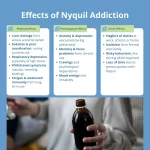
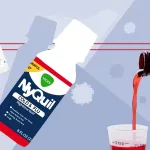

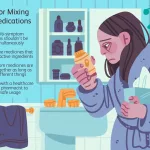


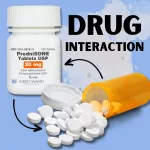
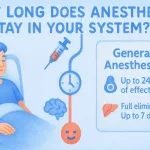
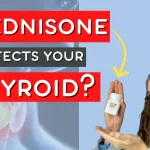

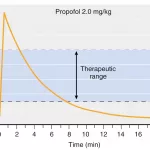




Leave a Reply
You must be logged in to post a comment.